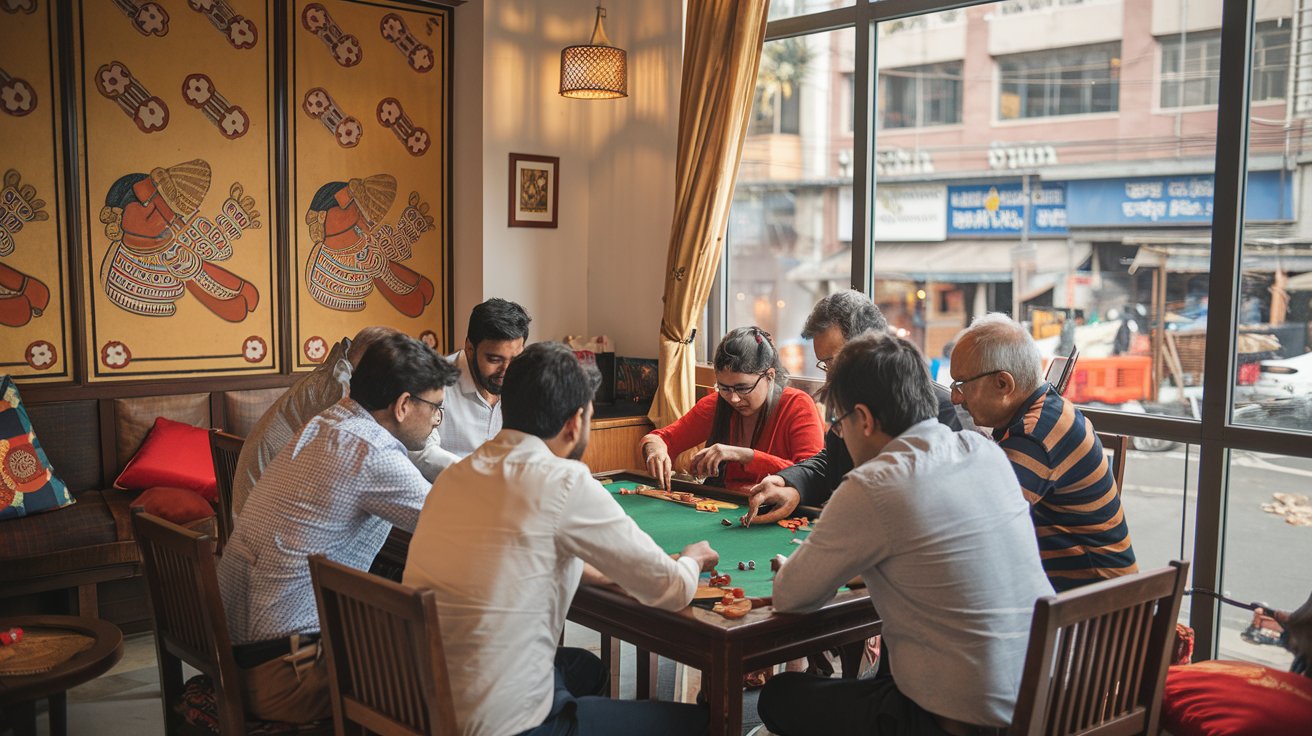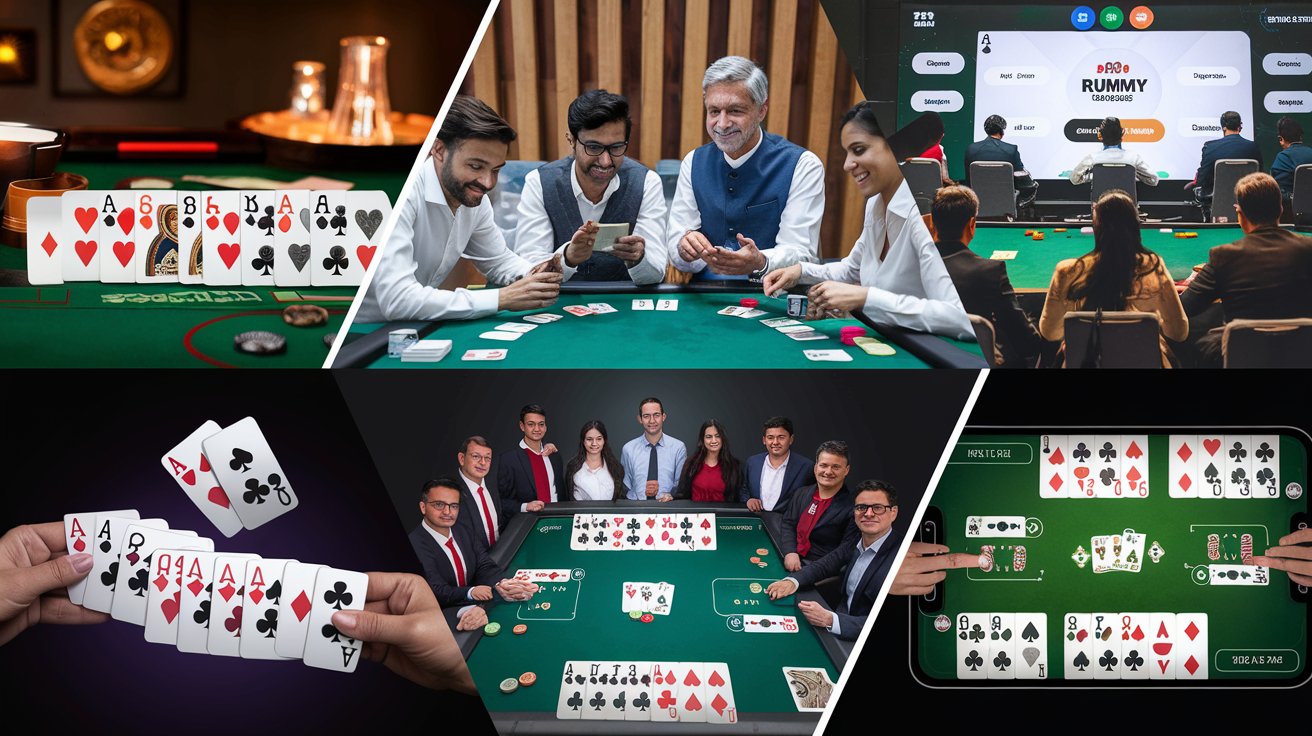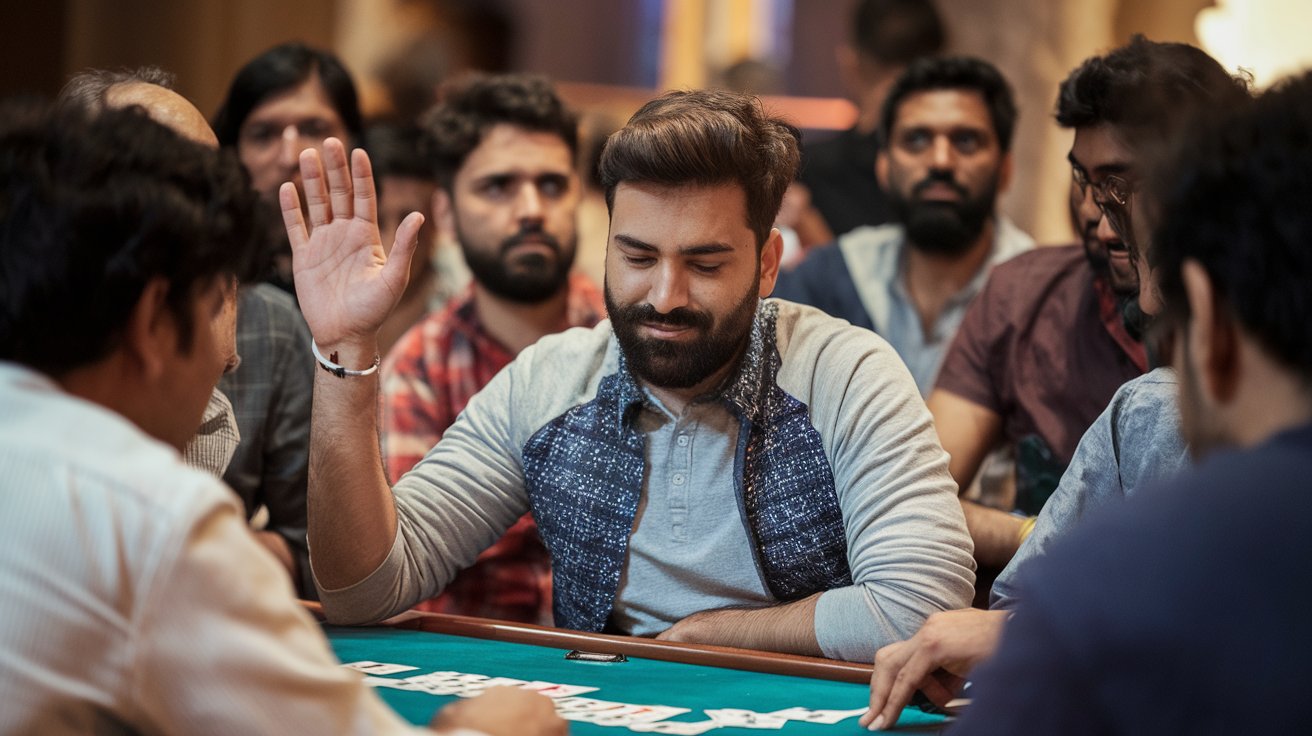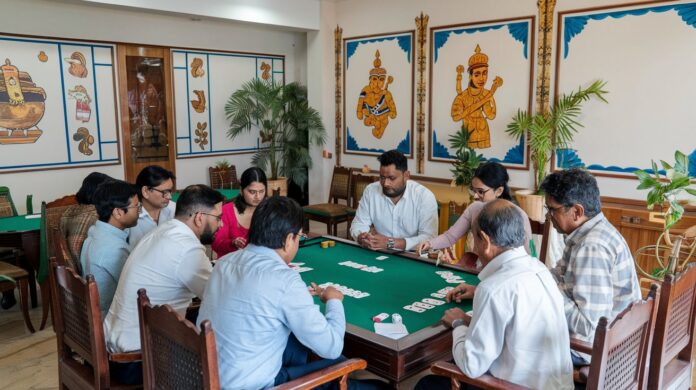Rummy, a card game that blends skill, strategy, and a dash of luck, has woven itself into the fabric of Indian culture over the decades. From smoky village gatherings to sleek digital apps, the journey of rummy in India is a fascinating tale of tradition, adaptation, and innovation. As we dive into the evolution of this beloved game, we’ll explore its origins, its rise in popularity, the legal battles it faced, and how technology has transformed it into a modern-day phenomenon. Whether you’re a seasoned rummy player or a curious newbie, this blog will take you through the captivating history of rummy in India and why it continues to thrive in 2025.
The Origins of Rummy: A Game with Global Roots

Rummy’s story doesn’t begin in India, but its Indian chapter is one of the most vibrant. Historians trace the game’s origins to the 19th century, with influences from games like Conquian in Mexico and Mahjong in China. It’s believed that rummy made its way to India during the colonial era, brought by British officers and traders who played it as a pastime. The game’s simple rules—forming sets and sequences with a standard deck of cards—resonated with Indians, who already had a rich tradition of card-based games like Teen Patti and Ganjifa.
In its early days, rummy was a social activity, played during family gatherings, festivals, and rainy afternoons. The game’s accessibility, requiring only a deck of cards and a basic understanding of rules, made it a hit across rural and urban India. Over time, it evolved from a casual pastime to a cultural staple, with regional variations adding unique flavors to the gameplay.
Rummy in the Pre-Independence Era: A Game of Skill Takes Root
Before India gained independence in 1947, rummy was already gaining traction among the masses. Unlike games of pure chance, rummy demanded mental agility, memory, and strategic planning—qualities that appealed to a nation navigating complex socio-political changes. In villages, players would gather under banyan trees, using hand-painted cards, while urban elites played in colonial clubs with imported decks.
During this period, rummy began to take on an Indian identity. Local rules emerged, such as the popular “Points Rummy,” where players aimed to minimize their points while forming valid sets. The game’s skill-based nature distinguished it from gambling-heavy games, earning it a reputation as a respectable pastime even among conservative households.
Post-Independence Boom: Rummy Becomes a Household Name
The decades following independence saw rummy cement its place in Indian homes. The 1950s and 60s were a golden era for traditional games, as families sought affordable entertainment in a newly independent nation. Rummy fit the bill perfectly—it was inexpensive, engaging, and could be played by people of all ages. Diwali celebrations, in particular, became synonymous with rummy, with relatives huddled around tables, exchanging laughter and friendly bets.
Interestingly, this period also saw rummy’s first brush with legal scrutiny. India’s gambling laws, rooted in the Public Gambling Act of 1867, classified games of chance as illegal. However, rummy’s reliance on skill rather than luck sparked debates. In 1968, the Supreme Court of India delivered a landmark judgment, declaring rummy a game of skill and distinguishing it from gambling. This ruling was a turning point, legitimizing rummy and paving the way for its widespread acceptance.
The 1980s and 90s: Rummy Goes Mainstream

By the 1980s, rummy had become a cultural phenomenon. The rise of television and Bollywood added a glamorous sheen to card games, with rummy often depicted in movies as a sophisticated yet relatable activity. Players began organizing local tournaments, and the game’s competitive edge started to shine. In cities like Mumbai, Kolkata, and Chennai, rummy clubs sprang up, attracting enthusiasts who honed their skills over endless rounds.
The 1990s brought economic liberalization to India, opening doors to global influences. Rummy adapted too, with players experimenting with international variants like Gin Rummy and Indian Rummy gaining prominence. The 13-card Indian Rummy, played with two decks and jokers, became the country’s most popular version, blending traditional gameplay with a distinctly Indian twist.
The Digital Revolution: Rummy Enters the 21st Century
The dawn of the internet in the late 1990s and early 2000s marked a seismic shift in rummy’s evolution. As India embraced technology, rummy leapt from physical tables to computer screens. The first online rummy platforms emerged around 2005, offering players the chance to compete with opponents nationwide. This was a game-changer—suddenly, a farmer in Punjab could challenge a software engineer in Bangalore, all from the comfort of home.
The rise of smartphones in the 2010s turbocharged this trend. Mobile apps like RummyCircle, Junglee Rummy, and Ace2Three turned rummy into a 24/7 activity. These platforms introduced features like cash tournaments, practice games, and tutorials, making rummy accessible to novices and pros alike. By 2015, online rummy had millions of registered users, with the industry valued at hundreds of crores.
Technology didn’t just expand rummy’s reach—it enhanced the experience. Secure payment gateways allowed players to wager real money, while AI-driven algorithms ensured fair play. The social aspect of rummy wasn’t lost either; chat features and multiplayer modes kept the camaraderie alive, even in a digital space.
Legal Challenges and Triumphs in the Digital Age

As online rummy grew, so did regulatory scrutiny. States like Tamil Nadu, Andhra Pradesh, and Telangana imposed bans on real-money gaming, citing concerns over addiction and financial losses. However, rummy’s status as a skill-based game continued to be its saving grace. In 2021, the Madras High Court struck down Tamil Nadu’s ban on online rummy, reaffirming the Supreme Court’s 1968 ruling. This back-and-forth between lawmakers and courts highlighted rummy’s unique position—caught between tradition and modernity, legality and morality.
By 2025, the legal landscape has stabilized somewhat, with most states recognizing online rummy as a legitimate skill-based activity. Industry advocates argue that regulated platforms create jobs, generate tax revenue, and offer safe entertainment, a stance that’s gaining traction as India’s gaming market booms.
Rummy in 2025: A Blend of Tradition and Innovation
Today, March 21, 2025, rummy stands at the crossroads of its rich history and a tech-driven future. The game has evolved beyond recognition from its colonial roots, yet it retains the charm that captivated players centuries ago. Physical rummy tables still thrive during festive seasons, while online platforms rake in millions of players daily. The introduction of augmented reality (AR) and virtual reality (VR) rummy games promises to take immersion to new heights, letting players “sit” at virtual tables with friends across the globe.
The player base has diversified too. Millennials and Gen Z, raised on digital devices, dominate online rummy, while older generations keep traditional formats alive. Women, once underrepresented in card games, now form a significant chunk of the online rummy community, thanks to the privacy and convenience of apps.
Why Rummy Endures in India
So, what fuels rummy’s enduring appeal in India? For one, it’s the perfect blend of skill and entertainment. Unlike pure luck-based games, rummy rewards practice and strategy, giving players a sense of agency. It’s also deeply social—whether played face-to-face or online, it fosters connection. Add to that its adaptability—rummy has seamlessly transitioned from village courtyards to smartphone screens—and you have a game that’s timeless yet contemporary.
From an SEO perspective, rummy’s popularity makes it a hot topic. Keywords like “online rummy India,” “rummy evolution,” and “play rummy online” dominate search trends, reflecting the game’s massive online footprint. As India’s gaming industry grows, projected to hit $5 billion by 2027, rummy remains a cornerstone, bridging generations and geographies.
The Future of Rummy in India
Looking ahead, rummy’s evolution shows no signs of slowing. Blockchain technology could introduce transparent, tamper-proof gaming platforms, while AI might personalize gameplay for every user. Esports-style rummy tournaments could turn casual players into professionals, mirroring the rise of poker globally. Whatever the future holds, rummy’s ability to adapt while staying true to its roots ensures it will remain a beloved part of India’s cultural tapestry.
Conclusion
The evolution of rummy in India is a testament to the game’s resilience and charm. From colonial parlors to digital arenas, it has weathered legal battles, embraced technology, and won hearts across the nation. In 2025, as we celebrate its journey, rummy stands as more than just a card game—it’s a symbol of India’s ability to blend tradition with progress. So, the next time you shuffle a deck or log into an app, remember: you’re not just playing rummy—you’re partaking in a legacy that’s centuries in the making.
Ready to test your skills? Whether you prefer the tactile feel of cards or the thrill of an online match, rummy’s waiting. Deal the cards, form your sequences, and let the game begin!

Zareb Saleh is a journalist at Gulf Today and a ghostwriter for Gameoholic, specializing in gaming, technology, and digital culture. With a keen eye for industry trends, he delivers insightful stories that engage and inform readers.




